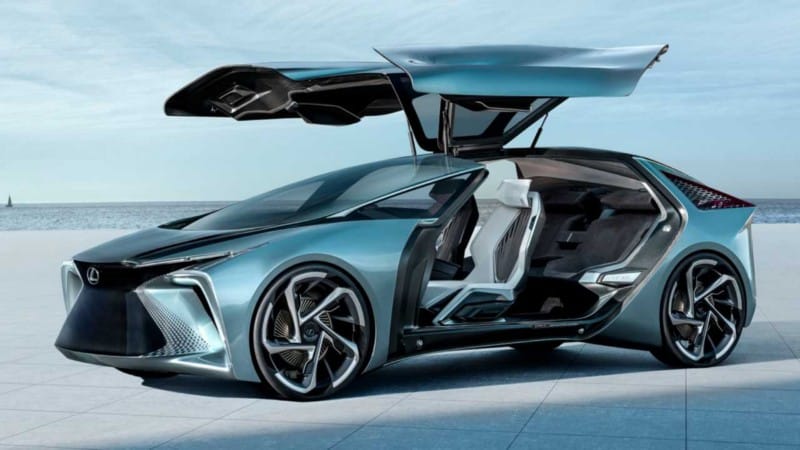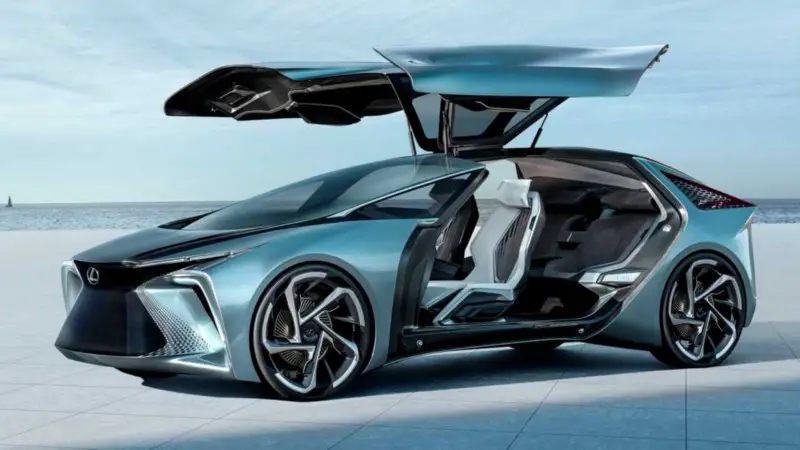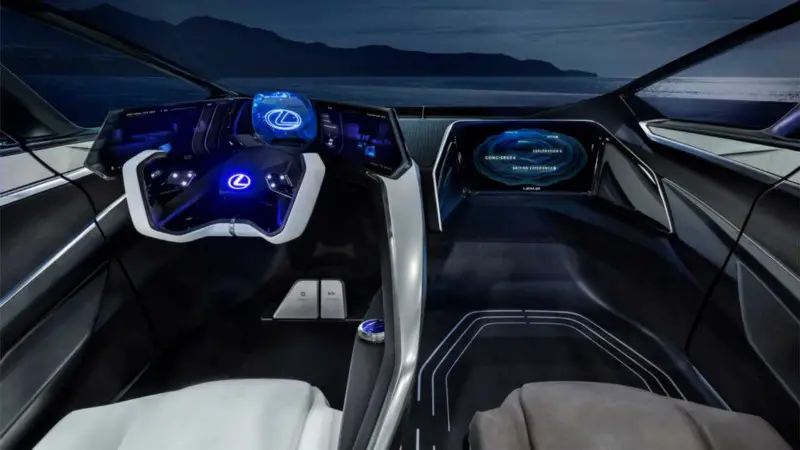Lexus Goes Electric With The LF-30 Concept Car
It might not necessarily seem like a big car at a first glance, but the LF-30 is actually quite large — stretching at 5090 millimeters…


It might not necessarily seem like a big car at a first glance, but the LF-30 is actually quite large — stretching at 5090 millimeters (200.4 inches) long, 1995 mm (78.5 in) wide, and 1600 mm (63 in) tall, with a generous wheelbase of 3,200 mm (126 in). It weighs a hefty 2,400 kilograms (5,291 pounds), but that’s understandable considering it packs a total of four electric motors — one for each wheel. This setup enables the vehicle to run in front-, rear-, or all-wheel drive, depending on the driving condition.
With a combined 536 horsepower (400 kilowatts) and 700 Newton-meters (516 pound-feet) of torque on tap, the latest concept from Lexus runs to 62 mph (100 km/h) in a mere 3.8 seconds and tops out at 124 mph (200 km/h). Those four electric motors feed on a large 110-kWh battery pack mounted on the floor to improve the center of gravity and consequently handling.
Lexus says the LF-30 concept can cover up to 311 miles (500 kilometers) between charges based on the WLTP cycle. Once the battery is depleted, it can be charged at 150 kW without the hassle of having to use a cable as the vehicle has been developed with support for wireless charging.
The LF-30 Electrified has a color-changing front face that displays luminescent patterns to signal whether it is working in normal or driverless mode. The car’s exterior is finished with a metal-infused coating in the color “voltaic sky”, which completes the futuristic theme of the concept with a blue-green hue.

The futuristic interior has a front passenger seat designed to mimic a first-class seat on an airliner and there’s a large display in front from where the person can access a wide variety of functions.
The glass roof area above the rear seats serves a double purpose as it also acts as a “SkyGate” display window benefitting from augmented reality tech to show different types of info: navigation, videos or a star-filled sky — with rear passengers using gesture controls to choose the preferred settings. To top it all off, the concept is complemented by a “Lexus Airporter” drone-technology support vehicle that’ll carry your luggage from in front of the house to the vehicle’s cargo area.
Various interfaces allow communication between car and driver — a glass roof above the rear seats can be operated using voice control, while a gesture-controlled window display uses augmented reality to present media and vehicle information.
An on-board AI character can also adjust functions such as air temperature, audio, and navigation routes, and suggest activities when the car has reached its destination. It can recognize the driver’s preferences and use this to help them control the suspension and powertrain settings in real-time according to driving conditions.
This car is expected in the market by 2030




